Travelport’s winning recipe for PI Planning across India, the UK, and US
Business Size: Large Enterprise
Lockheed Martin – Adopting SAFe for Agile Transformation in F-16 Product Development
Lockheed Flying the F-16 into the Future with SAFe: Evolving the Falcon Factory
Share:
Presented at the 2019 Global SAFe Summit, San Diego Oct. 2, 2019, The F-16 Fighting Falcon is the world’s most successful, combat-proven multirole fighter with approximately 3,000 operational F-16s in service today in 25 countries. In 2014, new production orders were drying out, and the F-16 production line was in danger of shutting down. Our solution to that problem was the adoption of SAFe to streamline the F-16 Product Development and Engineering in 2015. We overcame a lot of challenges along the way, and made rapid progress initially, but have plateaued. That should come as no surprise though. Our limited SAFe implementation showed us limited results. But we are turning this ship around! This year we have really taken stock of our Agile Transformation and implemented several ground-breaking initiatives that are changing our landscape. Lockheed has now started a new F-16 production facility in Greenville, South Carolina that is producing F-16s expected to operate to 2070 and beyond!
Back to: Customer Stories
Next: Bosch/ETAS Customer Story
Bosch / ETAS – Agile Transformation Using SAFe
Presented at 2019 Global SAFe Summit, San Diego Oct. 2, 2019
Share:
For over 130 years the name “Bosch” has been associated with forward-looking technology and trailblazing inventions that have made history. Bosch does business all over the world and is active in the most wide-ranging sectors. In particular, BOSCH is the largest supplier for the global automotive industry.
Dr Volkmar Denner, CEO of Bosch; “For Bosch agility is crucial, it allows us to adjust to the increasing speed of change around us. Agility allows us to remain in a position as an innovation leader.”
This video tells the story of how an enterprise of more than 70,000 knowledge workers and traditionally independent business areas have faced the challenge of an agile transformation and started an alignment to common a strategy for mobility solutions and the SAFe journey. It provides a deep dive into one of Bosch`s Business Units, ETAS, and shows what was already achieved by introducing the SAFe and focusing on current activities in Lean Portfolio Management and how the company organizational structure is being adopted as a consequence of the SAFe transformation.
Back to: Customer Stories
Next: PepsiCo Customer Story
PepsiCo’s UX-Led Approach – Scaled Agile Transformation
Presented at 2019 Global SAFe Summit, San Diego Oct. 2, 2019
Share:
How do the User Design (UX) principles of Simple, Human and Connected guide an ART to interpret and incorporate user-centric design (UCD)? What is the ideal operating model for UX design that includes discovery, design and delivery tracks? This talk will provide an overview of the hypotheses applied to deliver user-centric design within the Scaled Agile Framework® at PepsiCo.
Back to: Customer Stories
Next: Anthem Customer Story
Anthem – Adoption of Agile Mindset for Enterprise Business Agility
Anthem Agile Transformation Journey
Share:
Anthem chose to apply the Scaled Agile Framework incrementally, rather than a big bang rollout. Approaching the problem from both top-down and bottom-up, the SAFe transformation for the enterprise concentrated on one vertical slice at a time working with both Business and IT leaders in an area to enable Lean-Agile practices and provide hands-on coaching and education to drive the adoption of the Agile mindset.
They chose to apply the Scaled Agile Framework incrementally, rather than a big bang rollout. Approaching the problem from both top-down and bottoms-up, the transformation for the enterprise concentrated on one vertical slice at a time working with both Business and IT leaders in an area to enable Lean Agile practices and provide hands-on coaching and education to drive the adoption of the Agile mindset.
They worked closely with their partners to go beyond just the mechanics of training and coaching with a focus on sustaining the change and moving towards true enterprise business agility.
Back to: Customer Stories
Next: Easterseals Customer Story
SAFE Case Study – CMS – Approach to Scaling Agile Using SAFe®
Nearly 140 million Americans rely on Medicare, Medicaid, the Children’s Health Insurance Program, and the health insurance exchanges—all programs administered by the Centers for Medicare & Medicaid Services (CMS). The agency pays out approximately $767 billion in benefits annually and employs 4,100 people to administer programs in partnership with state governments.
Challenge:
Isolated Scrum teams didn’t make much progress within a deeply ingrained waterfall culture and against long-range planning and budgeting.
Industry:
Government, Healthcare
Results:
- CMS shifted the budget from 100% dedicated to system maintenance to a 40/60 split between maintenance and innovation
- Help desk tickets decreased by 55%
- Surveys show a 27% increase in employee satisfaction
Best Practices:
- Prepare for face-to-face events – CMS found the SAFe Implementation Roadmap and training invaluable to smooth-running PI planning events
- Establish transparency – Stress the importance of open, honest discussion and engagement
- Communicate the vision – In opening remarks at PI events, CMS reminded team members that their work directly impacts people’s health and lives
Introduction
Amid the pressures of increasing citizen expectations, the CMS environment is complex and ever-changing as budgets and legislation fluctuate—making for a perfect setting to introduce Lean-Agile principles. A few isolated programs had begun using Scrum practices, but given the size and complexity of programs at CMS, Scrum did not lend itself well to longer-range planning and the identification and mitigation of dependencies among the Scrum teams. In addition, the organization still had cultural battles to overcome.
“We were still suffering from a ‘throw-everything-over-the-wall’ mentality,’” explained Brent Weaver, Director of Systems Implementation at CMS. “The few Agile teams were requiring more of programs and that created more frustration on both sides. There was no vision or framework where everyone saw how they fit together. As a result, what they delivered was late, with defects—and not what the market needed.”
SAFe: Systems Thinking for a Complex Organization
In 2017, Weaver arrived with the charge of improving the Agile transformation for the Center of Clinical Standards and Quality (CCSQ) within CMS. In the search for a new approach, the Scaled Agile Framework® (SAFe®) resonated as the right option.
“SAFe brought a much-needed approach to scaling Agile and systems thinking that was critical to an organization of our size and complexity,” Weaver said.
In preparation to obtain buy-in and funding, Weaver built his knowledge of SAFe by taking some initial courses: Leading SAFe®, and later, Implementing SAFe®. Following the Leading SAFe® course, he made the case for the Framework for leadership and earned the full support of Steve Davidson and Mark Plaugher, Directors of the Information Systems Group within CCSQ. Additionally, Debra Santos, Director of Hospitals, ASC, and QIO Systems was also willing to support the SAFe adoption for one of her systems.

For help, Weaver tapped Scaled Agile Partner, Agile Six Applications, Inc. With Agile Six, CMS decided to implement SAFe first in a group brand-new to Lean-Agile concepts, rather than with those already using Scrum, for a chance to start from scratch. The first teams on SAFe would be those working on CMS’s Hospital Quality Reporting (HQR) system, which healthcare facilities use to report data to CMS.
With leadership backing, they secured the budget and marked the calendar for the first face-to-face Program Increment (PI) planning event—to take place just six weeks in the future.
PI Planning Day One: Messy and Chaotic
To meet the timeframe, CMS decided to shortcut the recommendations from the SAFe Implementation Roadmap and skip SAFe training—a decision that created significant challenges and that, in hindsight, they wouldn’t recommend to other organizations. The fact that many team members were located outside the area, and many were contractors, played into that decision.
To help prepare for PI planning, HQR conducted a four-hour, half-day mock PI session with about 20 percent of team members to give them an idea of what to expect.
For the actual PI Planning event, CMS brought together more than 120 people, with approximately a quarter of them coming from out of town. The first day, unfortunately, proved to be chaotic and more challenging than expected for several reasons, according to Weaver and Ernie Ramirez, President of Agile Six Applications:
- They underestimated the refinement status of the backlog and didn’t follow all relevant parts of the SAFe Implementation Roadmap
- They had a single Certified SAFe® Program Consultant (SPC) in Ramirez (the recommendation is 3 – 5 per 100 development practitioners)
- The agency skipped Leading SAFe®, SAFe® for Teams, and SAFe® Product Owner/Product Manager training
- They did not identify Value Streams
- CMS simultaneously created the implementation plan and prepared for the Agile Release Train (ART) launch
“It cannot be overstated how horrible day one of that PI went,” Ramirez said. “We didn’t lay out an implementation plan as well as we should have, and the development contractor didn’t have the resources or roles we thought they did.”
PI Planning Day Two: ‘Quarter-Million-Dollar Conversations’
Day two, however, could not have played out more differently. “At the end of day one, rather than throw in the towel, we rolled up our sleeves, and resolved to do better in day 2. We came out of day two with a plan that the teams would ultimately deliver on over the next 12 weeks,” Ramirez said.
Ramirez points to a few reasons for the turnaround. After the first day, people returned knowing more of what to expect and came more prepared. Also, the two-day format created a sense of urgency to make progress. Additionally, Ramirez walked around troubleshooting any issues immediately as they arose.
“After the first day, everyone had an opportunity to ‘sleep on it,’” he said. “A lot of the frustration at the end of the first day kind of washed out and everyone came back with a renewed focus and commitment to get the plan done,” Ramirez said.
Team members and program managers alike left the event more hopeful than ever before, believing they could actually hit the plan’s targets. Most promising, Weaver and Ramirez noticed productive discussions happening throughout the room—often between people who had worked together for several years, but had never actually met one another in person.
“We witnessed a lot of team and cross-team bonding that just cannot be replicated over WebEx, Hangouts or Zoom,” Ramirez said. “There is something immeasurably valuable about being in the same room with someone, laughing, joking and yes, respectfully arguing. A lot of trust was earned and built on day two.”
“Quarter-million-dollar conversations were happening all over the place,” Weaver said. “That’s what it would have cost to fix problems down the road if those conversations had not happened.”

Communication, Collaboration across CMS + Contractors
Following that first PI, CMS began adhering to the SAFe Implementation Roadmap. They delivered Leading SAFe®, SAFe® for Teams, and SAFe® Product Owner/Product Manager training. Unlike the first PI, they identified Value Streams.
“For the second PI, we found a lot of value in identifying Value Streams and ARTs, which helped people understand where they fit in and how teams fit together,” Ramirez said.
Agile Six also delivered training to external contractors, including Leading SAFe®, SAFe® for Teams, and SAFe® Product Owner/Product Manager. Several people at contractor organizations earned their SAFe® Program Consultant (SPC) certification and began training their own people—knowing that it is likely to give them one more strength to promote as they seek to win future contracts with CMS.
During RFPs, contract organizations routinely compete against each other. However, once on contract, they must work with team members from competing firms. As an unexpected benefit, SAFe helped unify CMS team members and contractors, as well as contractors from various companies. Face-to-face, they collaborate more effectively and come to personally know the people behind the roles, developing comfortable working relationships with each other.
“It’s fundamentally better for American taxpayers that teams work together and break those walls down,” Weaver said. “I’m really proud of contractors’ ability to collaborate, share information, and work as a single team. Doing so has helped us reduce trouble tickets, so we know we’re delivering higher-quality solutions.
Because of CMS’s heavy use of contractors, each ART is comprised of people from numerous organizations. That required transformation leaders to be sensitive to job functions and responsibilities across the different companies on a single ART to foster trust and teamwork instead of competition. Having a single backlog for an ART creates further harmony among diverse team members.
27% Boost in Employee Satisfaction
So far, CMS has trained more than 200 people, including 25 – 30 Certified SAFe® Program Consultants (SPCs). The agency has also since launched four more Agile Release Trains (ARTs).
With training and preparation, participants have been more engaged in PI Planning events after that first learning experience. Communication, says Weaver and Ramirez, has been critical to the acceptance of the new way of working. Especially in the early days, they had to communicate clearly and persistently to convince people to join in the effort and assuage fears about what this meant for their futures.

“We really had to do a lot of selling on SAFe to get people comfortable,” Weaver said. “People were genuinely apprehensive about changing the way they have worked for so long, but as they have seen results, they have embraced it.”
And over time, HQR has implemented other SAFe concepts such as Weighted Shortest Job First (WSJF). Well ahead of a PI, the primary stakeholder has time to weigh the value of work and prioritize—which takes some of the emotion out of the decision, Ramirez says.
They are also in the process of adjusting budgets to fit more with shorter-term planning. Instead of years in advance, they began thinking in terms of three-month increments, in which Ramirez called a halfway step between the traditional approach and the ‘wild west’ of Scrum.
Higher Quality, Happier People
After a bumpy beginning, CMS points to measurable progress:
- Budget shift to modernization versus maintenance – Instead of 100% of the budget going to maintain the existing HQR system, now only 40% is dedicated to it. A full 60% of the budget goes toward innovation for the system, helping the agency deliver on citizen expectations.
- Higher quality – The HQR group reports a 55% decrease in help desk tickets from hospitals—demonstrating a direct impact to customer satisfaction.
- Happier people – Surveys conducted before and after SAFe show a 27% increase in employee satisfaction.
While CMS can’t yet measure customer satisfaction gains directly, they know that fewer quality issues and more innovation contribute to that goal.
“SAFe provided a map that enabled us to shift to modernizing versus just maintaining the status quo,” Weaver said. “Beneficiaries will ultimately benefit from more user-friendly, human-centered design systems, which will allow us to reduce the burden on our providers.”
The group’s success has caught the attention of others, with trains now starting in other CMS groups. “Other programs within CMS have approached HQR asking us how to drive the same outcomes,” Santos said. “It’s a testament to how far we’ve come in the past year.”
- Transformation starts with leadership – Ideally, you need two to three leaders who are fully committed to the change. If possible, send them through SPC training.
- Coaches are a MUST – CMS found substantial value in them
- Agile contracting is necessary – Rigid contracts that have highly specific deliverables can be an obstacle to agility and to embracing shifting priorities as new data emerges
- Use contractors that understand Lean-Agile principles – Hire teams that truly understand what this means, not just those who can talk the talk
- Find collaborative work space – From PI planning events to day-to-day work, collaborative work space enables teams to capture the value of face-to-face interaction
- Just do it! – “If we could time-travel and do it again, we would emphasize a sense of urgency to get going,” Weaver said. “Set a near-term date and follow the roadmap.”
- Engage employees – Any effort is only as strong as its people. Approach the change with empathy for what your team is undergoing and leverage the support of management and coaches to keep employees engaged and excited.
- Start with Essential SAFe® – CMS found it valuable to simplify as much as possible and started with a program that lent itself to Essential SAFe. The learnings they achieved will influence larger programs, which will require multiple Value Streams.
Share:
Back to: All Case Studies
Suggested Case Study:
NHS Blood and Transplant
Deutsche Bahn – Lean-Agile Transformation Story
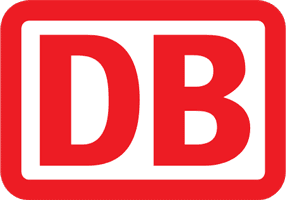
“For Deutsche Bahn Digital Sales, SAFe is the framework for the strategic digitalization program … With it, we are delivering faster and more effectively on our objectives, which drives our ability to compete in the digital age.”
—Matthias Opitz, Senior Program Manager, DB Vertrieb, Deutsche Bahn
Challenge:
After privatizing the company, Deutsche Bahn faced new market forces, along with increasing competition from new transportation players.
Industry:
Transportation
Results:
- Lead time dropped from 12 months to 3-4 months
- Coverage of test automation improved from 30% or less to 80-90%
- Greater collaboration among teams and better results have raised employees’ satisfaction levels
Best Practices:
- Start ASAP – Begin, even if imperfectly. “It’s more important to give people a chance to work in this environment than to wait until everyone is trained,” said Thorsten Janning, SAFe Fellow, of KEGON.
- Train extensively – That said, train management and teams as much as possible before the first PI Planning event.
- Get expert help – DB worked with Scaled Agile Partner, KEGON, from the start and continues to do so for the support and experienced guidance a partner can bring. Progress is a continuous process of asking questions, which a partner can help answer.
The partner that made it happen:

Introduction
In recent years, Deutsche Bahn (DB)—one of Europe’s largest railway operators—has faced unprecedented change. In 1994, the two railways of East and West Germany merged after the country’s reunification. While the company was adjusting to the Lean-agile transition, it was also contending with rising costs and greater competition than ever before from other railway operators, long-distance bus services and new, fast-acting players providing ride services and car-sharing.

Within this challenging environment, in 2014 DB embarked on a digital transformation to modernize the way their business units operate, from cargo transport to passenger ticket sales. It was up to each business unit to decide on a path forward to meet those goals.
Initially, the business units implemented Lean-Agile practices at the team level, on a small scope. Yet as they began trying to deliver on objectives, they fell short of targets—especially on larger solutions. The company struggled with lengthy decision cycles; fragmented responsibility; constant design, coordination and estimation; changing requirements; and many, many dependencies.
“In nearly every business unit, the transformation projects struggled to deliver large solutions,” said Matthias Opitz, Senior Program Manager, DB Vertrieb. “We were going around in circles analyzing, and the processes were so complex that the organization was not able to deliver simple minimum viable products.”
It was clear the effort would require a considerable overhaul of its long-established ways of working.
Full-Speed Ahead in DB Cargo
The company looked for a Lean-Agile methodology capable of handling its complex environment on a larger scale and found it in the Scaled Agile Framework® (SAFe®).
Within each segment of the company, at least one business unit rolled SAFe out as part of the digital transformation initiative:
- DB Cargo: Freight transportation and Logistics
- DB Netze: Infrastructure/rail network
- DB Vertrieb: Passenger transport
“For Deutsche Bahn Digital Sales, SAFe is the framework for the strategic digitalization program,” Opitz said. “It brought a continuous delivery process that keeps us on track toward our objectives.”
DB Vertrieb started its Lean-Agile transformation in 2015, when the business unit established an effort named ‘KAI‘ (an acronym for the German words meaning customer centricity, agility, and innovation), which stressed five attributes:
- Customer excitement over optimization of profits
- Iteration over perfection
- Participation over hierarchy and silos
- Trust and personal responsibility over top-down
- Active participation instead of business as usual
To ease the transition, the company engaged Scaled Agile Partner KEGON as its primary provider for training and coaching. With KEGON, the DB companies began comprehensive training to prepare everyone who would be joining an Agile Release Train (ART), a team of teams in the Framework.
Lean-Agile leaders at DB Cargo and DB Vertrieb took the Leading SAFe® course, with others taking role-based training such as SAFe® Scrum Master, SAFe® for Teams, and SAFe® Product Owner/Product Manager. At least nine change agents at DB business units also earned SAFe® Program Consultant (SPC) certification in order to teach their colleagues. DB saw training as essential for helping people through the inevitable challenges that would come up, including resistance.
“Training was very important for giving us confidence and answers to questions that came up,” Opitz said. “Because we trained all participants, training also helped open discussions and convince skeptical people that this was the right way to go.”
Delivering on All Commitments
DB Cargo was the first division within the company to kick off the first ART with a Program Increment (PI) planning event. Managers of the other business units attended only to observe.
In that meeting, they accomplished several of their top objectives:
- Clarified an incremental release strategy
- Identified business epics regarding end-to-end processes
- Prioritized business epics with weighted shortest job first (WSJF)
- Analyzed business epics and identified features
- Figured out dependencies and planned teams’ work for the coming PI

SAFe practices such as the Program Board gave participants clear insight, for the first time, into the company’s numerous dependencies. With that visual aid, they realized that changes to peripheral systems would affect the critical path of the initiative, allowing teams to coordinate appropriately.
As the PI got underway, leaders and team members alike hit challenges with breaking old habits. The governance and budgeting structures remained in a waterfall construct early on, but began to move toward Lean budgeting as DB Vertrieb kicked off PIs in 2017.
To bridge this gap, Opitz stresses that the business units had to ensure that SAFe and the new approach extended to the broader organization, beyond IT. Therefore, DB Vertrieb decided to establish a ‘Target Operating Model’ (TOM) for the business unit and to perform the transformation activities in a dedicated ART. Shared services departments such as HR, controlling, communication, training
and support, and marketing were brought into the fold.
Any doubt or resistance soon faded away as teams delivered perfectly on target for their first PI. “At first, everyone looked at the committed backlog and said, ‘It’s too much,’” Opitz said. “But by the end of this first PI, we had delivered almost everything, which was a surprise to everyone.”
With SAFe, DB Vertrieb finally implemented a process by which to plan requirements, prioritize, and synchronize the various programs, and to break down the requirements and epics into features and stories. Additionally, automated epic and feature reporting brought critical transparency regarding implementation status.
“Just a year ago, it was a big challenge to do specifications,” Opitz said. “Now we have a process that makes it happen.”
Steps to Success
A number of steps and factors contributed to DB Vertrieb’s SAFe transformation. For one, DB leveraged Agile metrics to manage Portfolios and ARTs, and to help secure funding for them. In turn, management supported the effort by funding standing teams. They also invested in co-located and synchronous PI planning events for all ARTs in 2019.

The company performed a Value Stream analysis, which resulted in four Value Streams covering vertical products and horizontal services.
Toward continuous improvement of testing, teams performed system tests and implemented integrated development test servers.
Starting at the Portfolio level, they switched from a traditional requirements specification process to Agile requirements engineering.
DB Vertrieb found that self-organized teams were empowered to make decisions. In one case, a team detected an incorrect architectural decision when communicating with a stakeholder.
Share:
Back to: All Case Studies
Suggested Case Study: TomTom
Cisco IT – Adopting Agile Development – A SAFe Case Study
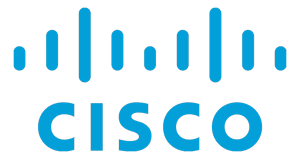
“Continuous delivery improved quality, increased productivity, and improved the employee experience.”
—Ashish Pandey, Technical Lead, CSIT Team
Challenge:
Cisco wanted to shift away from waterfall, and replace periodic major releases with continuous delivery of new features.
Industry:
Information Technology, Telecommunications
Results:
Cisco achieved significant improvements by using SAFe on two major projects:
- 16% drop in the defect rejected ratio (DRR)
- 40% decrease in critical and major defects
- 14% increase in defect removal efficiency (DRE)
- Improved employee satisfaction by eliminating the need for after-hours work and reducing meetings/calls
- 25 percent fewer quality assurance defects
- Sprints that ran more efficiently each subsequent time
Best Practices:
- Carefully build teams – Build teams with the best members from any location.
- Assemble the right tools – Cisco realized it could not have conducted regression testing every two weeks without test automation tools.
- Adjust as needed – For un-integrated or loosely integrated products, features or components, consider eliminating the Program level of SAFe.
Introduction
Cisco IT constantly looks for new ways to go faster and simplify. As part of its digital IT strategy, the Cisco Cloud and Software IT (CSIT) organization wanted to adopt more Agile development as a way to replace periodic major releases with continuous delivery of new features.

“Our goals are to speed up releases, increase productivity, and improve quality,” says Ashish Pandey, technical lead for the CSIT team.
Although a few small teams had adopted Agile techniques, waterfall was still the norm for teams that were large, distributed, or working on complex projects.
To solve these challenges, CSIT moved to the Scaled Agile Framework® (SAFe®) and immediately began applying scaled Agile practices on two major initiatives: their Subscription Billing Platform, and the Webex app for Samsung tablets..
Cisco® Subscription Billing Platform Challenge
For its Subscription Billing Platform (SBP)—which supports various subscription services—the company originally formed different teams for design, build, test and deploy. In waterfall fashion, each team began work once the previous team had completed their part.

- The separate tracks bogged down the process
- Release cycles exceeded three months
- They got late closure on requirements documents
- Teams missed delivery dates
- There were quality issues due to late integration cycles
- Teams worked long hours to make up for schedule slippage
The Solution
- On SBP, Cisco launched three Agile Release Trains (ARTs) in 2015: capabilities, defects and fixes, and projects.
- All three trains worked together to build and test small features within one SaaS component, while regularly delivering tested features to the system integration and testing team.
- Every day, the delivery team met for 15 minutes and determined action items.
Results – 40% Defect Reduction
Cisco delivered the new release of SBP on time and with all planned capabilities. When the company compared this release to those using waterfall, it found a 16 percent drop in the defect rejected ratio (DRR). Plus, critical and major defects decreased by 40 percent.
Continuous delivery also increased defect removal efficiency (DRE) by 14 percent due to greater collaboration among international teams, and by helping members identify opportunities for improvement during daily meetings.

The CSIT team attributes those quality improvements to several factors:
- Improving team collaboration and focus
- Enabling all team members to see current project status, promoting accountability
- Helping the three teams see beyond their own track
- Enabling teams to manage themselves
Additionally, the new way of working improved employee satisfaction by eliminating the need for after-hours work and reducing meetings and calls. Employees also saw how they fit into the bigger picture.
WebEx® App for Samsung
Challenge
In early 2014, the application for WebEx Meetings came pre-installed on Android tablets. Leading up to the release, developers had to work quickly to meet the release date, despite frequently changing requirements.
Solution
The team followed an Agile Scrum framework with three sprints for geographic rollout, the first two consisting of three weeks and the last of five weeks.
During planning, Cisco IT and others gathered requirements, and evaluated the readiness of environments, partners, and engineering and marketing teams.
Developers employed extreme programming, including test-driven development, where they first write an automated test case for a new function. Then they produced the minimal amount of code needed to pass the test and then refined code to make it simpler and easier to maintain.
Results – 25% Reduction in Quality Assurance Defects
On the WebEx app, Cisco reduced quality assurance defects by 25 percent. Plus, with developers checking code in several times a day, the business group reviewed new features sooner in the cycle than before. And each sprint ran more efficiently than the last.
Ultimately, Samsung sold more than 35 million tablets with the new app, creating wide exposure for the brand.
Share:
Back to: All Case Studies
Suggested Case Study: Royal Philips
Johnson Controls – Bringing More Engagement by Adopting SAFe
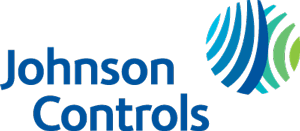
“SAFe brings so much more engagement, which has really been key for all parties. I wouldn’t want to do it any other way.”
—Rajbir Bal, Program Manager, Access Control
Challenge:
JCI’s access control division needed to improve coordination among firmware and software teams across three locations with the goals of improving time-to-market, quality, and engagement.
Industry:
Information Technology
Solution:
SAFe®
Results:
- The division releases at least 2-4X more frequently than before
- JCI reduced the size of its bug backlog by at least 3X
- Access control delivers on its commitments 100 percent of the time
- Customers/stakeholders appreciate the chance to provide feedback during the process—instead of at the end
Best Practices:
- Get help – Especially early on, partner with a consultant
- Train leadership – JCI trained resource managers, product management, and directors to get buy-in before moving forward
- Train SPCs – They serve as change agents and coaches
- Follow progress – JCI used automated Agile dashboards in Team Foundation Server
The partner that made it happen:
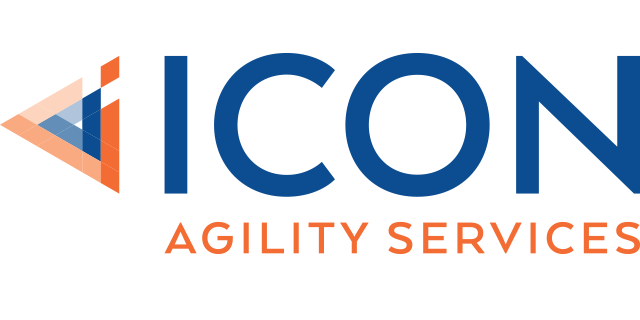
Introduction
Johnson Controls Inc. (JCI), a global diversified technology leader, serves customers in more than 150 countries and reports $30 billion in annual revenue. The company’s access control division develops systems to help buildings achieve maximum security while increasing efficiency and lowering costs.

Developing access control systems demands that firmware and software teams work together to deliver on a coordinated schedule. At JCI, those teams are spread across Southern California, Milwaukee, and India.
In 2014, the division began an effort targeted at improving time-to-market and the predictability of releases. They also sought to identify quality issues sooner, increase transparency, and raise team engagement.
“We were having very little success at agility planning, predicting releases and committing to and delivering on the timeline,” explained David Richter, Director of Engineering, Access Control. “We wanted to increase our flexibility and ability to react to change, and to react to our customer’s needs in a positive and respectful manner.”
But Richter and other change agents knew they would have to contend with several roadblocks along the path to SAFe transformation:
- Changing the established paradigm of working in waterfall
- Aligning teams in three disparate locations
Taking the SAFe route
JCI identified the Scaled Agile Framework® (SAFe®) as the most promising route for instilling lasting Lean-Agile practices.
“SAFe brought all the practices for us to start and then learn and adapt as we go,” said Rajbir Bal, Program Manager, Access Control. “It also forced us to have tough discussions early and throughout development—versus down the road when we got close to release.”
To gain leadership backing, the Director of Engineering gave decision-makers clear reasons for deploying SAFe and the expected outcomes. Concurrently, Scaled Agile Gold Partner Icon Agility Services trained leaders in Leading SAFe® so they would fully understand the Framework. This worked well as change agents succeeded in securing executive backing.
They followed with Leading SAFe® for directors, product managers, and resource managers, bringing together 15 individuals from California, Milwaukee, and India. Next, they defined the structure of the various teams that would begin the first Agile Release Train (ART), and put all team members through SAFe® for Teams training.
Two individuals, including Bal, earned certification as SAFe® Program Consultants (SPCs) in order to serve as change agents and coaches. Following certification, they became authorized to deliver SAFe® Scrum Master, SAFe for Teams, and SAFe® for Product Owner/Product Manager training.
In addition to Bal, other coaches included engineering managers and the director of engineering, while Scrum Masters became coaches at the team level. When it was apparent that Scrum Masters and Product Owners had an overlap of responsibility, or at least their understanding of it, Bal brought them together in one location for a custom Product Owner/Scrum Master workshop to clarify roles and responsibilities.
Navigating the path to alignment
In 2015, JCI launched its first ART at a Program Increment (PI) Planning meeting with about 100 people and followed Essential SAFe. Bal and others knew they were taking the first steps toward progress, however, early planning events felt chaotic.
“The first two PIs were not fun and we did not come out with committed plans,” Bal said. “Some features were not well defined, people were not clear on the process, and we needed more time to break down user stories.”
Bal attributes the discord to a couple of factors. The company included some user interface teams in that first ART, but not others, which caused misalignment. Geographic distribution also created challenges.
For more cohesive teams, they tried several approaches. First, they brought representatives from India to present on behalf of their teams. However, in doing so, they lacked the voices of those not in attendance.
Instead, they decided to start concurrent planning in the U.S. and India, with India beginning 12 hours ahead due to the time zone differences. As teams in India complete their planning days, those in the U.S. come in early to overlap with them. The Indian teams present their planning via videoconference. The same goes for day two of planning. American teams presented in what was the evening for their Indian counterparts.
Richter notes that, in those early months, JCI attempted to modify the Framework. Only some teams attended training and the company followed three-week sprints. “We tried to make changes to SAFe, but that was a disaster,” he said. “After that experience, we then started following SAFe exactly.”

Many people also insisted on continuing lengthy documentation of functional and design specs, after 50 years of following this practice. But that changed over several PIs. “We realized that documentation is not adding value,” Bal said. “Instead, we switched more to flow diagrams and writing code versus paragraph after paragraph of specs.”
With these tweaks, subsequent PIs progressed more smoothly as everyone became accustomed to the ceremonies and practices of SAFe. They made better use of their time at PI planning events. By the third PI, all teams also joined the train.
Over time, JCI found it more feasible to modify the framework to its own processes. In the access control division, developers must follow a specific process. They found that SAFe allowed them to implement Lean-Agile methods that worked in conjunction with these required processes. Other modifications included concurrent planning for India and the U.S., and face-to-face meetings between Product Owners and Scrum Masters to walk through the features radiator.
Acting like ‘One Big Team’
Richter and Bal saw a number of positive outcomes emerge during the transformation:
- Increased ownership – Entire teams committed to goals in PI planning and delivered on those goals
- Less technical debt – Issues were identified earlier in development, which allowed for course corrections along the way, instead of at the end of development
- Greater participation – All levels joined in, including business partners and architecture
- Earlier decisions – Using the Lean Startup Cycle, they make go/no-go decisions sooner in the cycle than they had before practicing SAFe
- More automation – Automation reduced the overhead of testing and corrects quality issues earlier
- Enhanced transparency – People bring up issues sooner, rather than at the end of a PI
- Greater teamwork – Inter-team collaboration improved as well, with individuals reaching out to help others when needed
“We started acting like one big team, instead of a bunch of teams of teams,” Bal said. “We saw more engagement at all levels.”
Driving time-to-market, quality, predictability
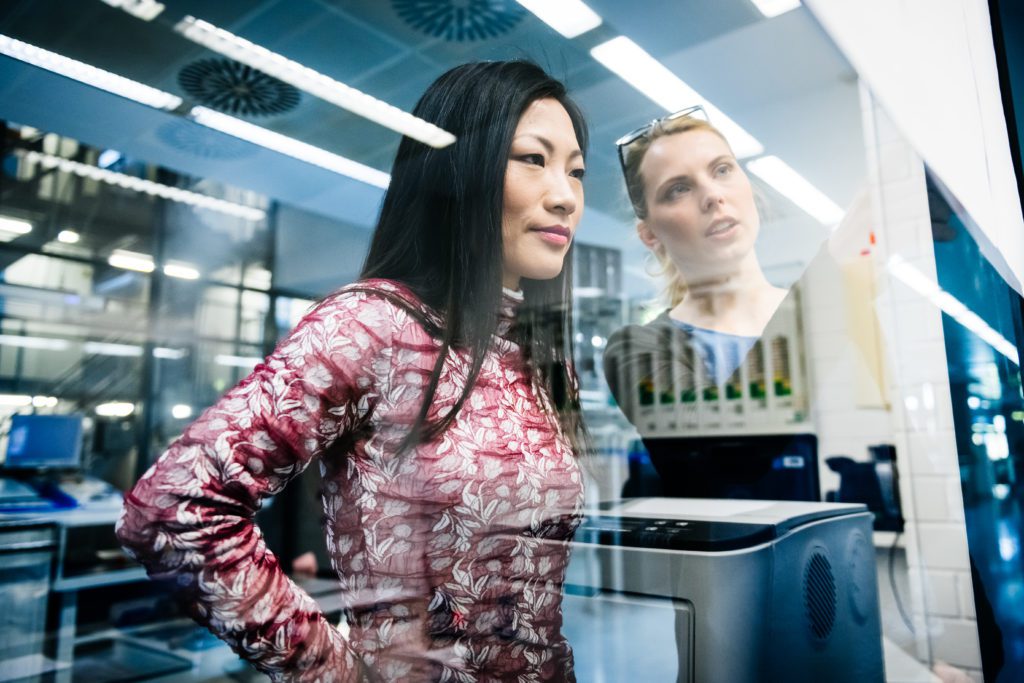
After early growing pains, JCI began seeing the results of its efforts:
- Faster time-to-market – The division releases at least 2-4X more frequently than before
- Higher quality – JCI reduced the size of its bug backlog by at 3 times
- Predictability – Access control delivers on its commitments 100 percent of the time
- Customer satisfaction – Customers appreciate the chance to provide feedback during the process—instead of at the end
“This wasn’t an easy process for us,” Bal said. “It takes time getting everyone jelling PI over PI. But SAFe brings so much more engagement, which has really been key for all parties. I wouldn’t want to do it any other way.”
For more details on JCI’s Essential SAFe implementation, download the supplemental PowerPoint presentation.
Share:
Back to: All Case Studies
Suggested Case Study:
Deutsche Bhan
Telia Finland – SAFe Transformation Journey
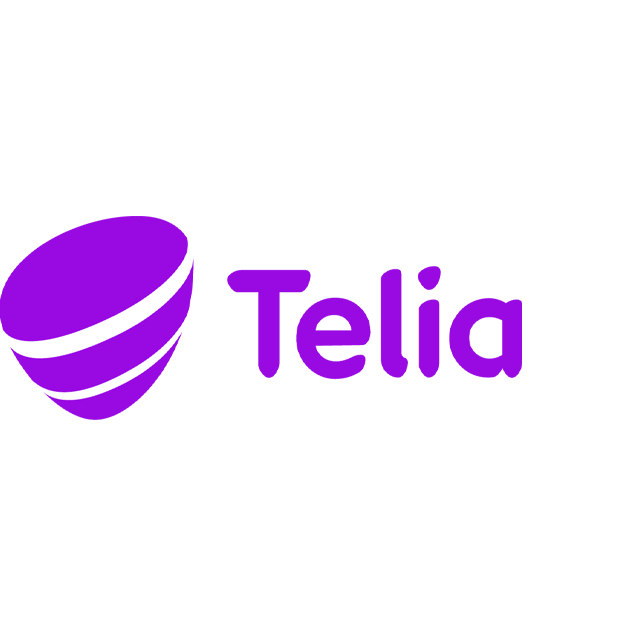
“SAFe seemed like a 1-to-1 match for us. Someone had already come up with a model to address our needs, which brought better requirements management, prioritization, governance, and a common language for the entire organization.”
—Risto Reinikainen, Head of Lean Agile Center of Excellence, Telia Finland
Challenge:
In the competitive, fast-moving telecom market, Telia Finland sought to deliver more capabilities to customers, but that longstanding waterfall methods kept it from moving forward.
Industry:
Telecommunications
Solution:
SAFe®
Results:
- 39 percent more capabilities than before
- 34 percent less cost
- 94 percent accuracy delivering on commitments for a major rebranding
- Teams deliver incrementally and more often
- People are more engaged in and satisfied with their work
Best Practices:
- Don’t skip training – Telia trained as many people as possible on Leading SAFe and Implementing SAFe, with many earning SAFe® Agilist (SA) and SAFe® Program Consultant (SPC) certifications. When they hit the critical mass, everything began running more and more smoothly.
- Get help, especially in the beginning – Telia engaged partners for training and guidance for the first one to two years to speed up implementation
- Prepare suppliers – The company provided way of working documentation (WoW) and training for suppliers
- Plan ahead – Do your homework on epics and features, and prepare carefully for ceremonies, especially for PI Planning
The partner that made it happen:
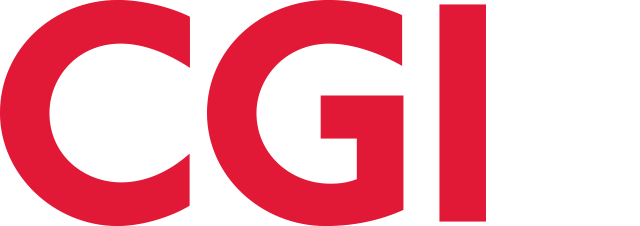
Introduction
Telia is a leading telecom operator in the Nordic and Baltic regions with 21,000 employees and 84.2 billion SEK ($9.46 billion USD) in net sales. Telia Finland is a major player in the Finnish market with operations on mobile, broadband, fixed line, and TV.
Within the country, multiple companies compete for a share of the telecom market. To stay ahead of the competition, in 2011 Telia Finland began a transformation initiative to deliver innovations to customers faster. At the time, the company struggled with infrequent and often delayed releases—about every nine to 12 months—and quality issues, with various groups placing the blame on others.

“The market, especially in the mobile business, is constantly changing,” said Risto Reinikainen, Head of Lean Agile Center of Excellence at Telia Finland. “To compete, we have to be very proactive and agile in bringing out cutting-edge offerings.”
To that end, individual teams and projects spent several years applying more or less homegrown practices to achieve goals, including improving communication, putting more emphasis on statements of work, better requirements management, and close follow-up of activities. Yet none of these disparate activities produced the results they sought and most projects continued in waterfall.
SAFe®: A Perfect Fit
Driven by an urgent need to change, Telia researched Agile methodologies. When they came across SAFe, it seemed like a perfect fit for their objectives.
“SAFe seemed like a 1-to-1 match for us,” Reinikainen said. “Someone had already come up with a model to address most of our needs, which brought better requirements management, prioritization, governance, and a common language for the entire organization.”
To begin the journey of adopting SAFe, Telia engaged partners such as Scaled Agile Partner CGI for training and coaching. Partners initially trained approximately 100 people on Leading SAFe®. The next natural step was to train Telia’s own people on Implementing SAFe®. During the fall of 2016, four people earned SAFe® Program Consultant (SPC) certification and began leading training as well..
The company kicked off its first Program Increment (PI) in 2015. Since many within the company had worked with loose Agile concepts previously, most individuals were ready and willing to embrace a more mature framework. Yet, the first few PIs did not go as smoothly as hoped as people were still getting accustomed to the new terminology and method. The structure, however, kept people engaged and with a clearer vision about their roles.
“The First Planning sessions were more or less chaotic,” Reinikainen said. ”Epics and features were far too big and not mature enough; routines and tools were missing; some teams were still waterfalling their sprints; and areas such as test automation and configuration management were not ready for Agile operations.”
The company applied that experience and devised various steps to prepare people for PIs. They trained as many people as possible on Leading SAFe® with many earning SAFe® Agilist (SA) certifications. To that, they added their own ”war stories” to educate team members and give them more insight throughout the training.
To prepare suppliers to join Agile Release Trains (ARTs), Telia created a guidelines document on working with Telia and applying SAFe, and a workshop to reinforce the concepts. Every few weeks, coaches followed up with suppliers to ensure they were working in the new model. The common language of SAFe effectively unified the internal and external team members across locations.
Once Telia reached around 200-250 people trained, Reinikainen noticed a new synergy; people were using the same terminology and applying the concepts more cohesively and naturally. Today, the company has trained more than 400 people. They promote continuous improvement and best practices with Communities of Practice.
An Answer for Complexity: Large Solution Level SAFe
Initially, Telia began with Program-level SAFe, but then moved to Portfolio-level SAFe. More recently, they moved to Full SAFe, including SAFe’s Large Solution level, to accommodate complexity, which includes more than 200 systems, many dependencies, and numerous external suppliers. Particularly, the Large Solution level offers the roles, artifacts, and processes for larger, multi-year projects such as those at Telia.
From Telia’s perspective, Full SAFe and SAFe’s Large Solution level brought much-needed additions:

- More transparency to all development activities and resourcing
- Coordination and synchronization between waterfall projects and Agile Release Trains (ARTs)
- Control, visibility, and transparency to connect all trains, suppliers, and programs
- Greater value creation with one prioritized portfolio backlog
“Large Solution SAFe brought a systematic approach to our complex environment that we definitely needed in order to coordinate our work,” said Nina Pakkanen, a Solution Train Engineer (STE) at Telia.
In Inspect & Adapt sessions at the close of PIs, comments from team members confirmed that the Large Solution level had achieved what Telia anticipated:
- “Large Solution Level makes epics more concrete prior to actual implementation.”
- “Capability and feature-level analysis are much clearer now.”
- “Transparency and collaboration with the business has improved a lot.”
Additionally, Telia consolidated from seven development portfolios into a single operational one that includes all B2B, B2C, B2O, and channel solutions—resulting in better visibility into resources, activities, and priorities. Before, the various portfolios competed for the same resources and projects.
Pulling Off a Rebrand—On Time
In 2017, when the company rebranded under the name Telia Finland, SAFe provided essential structure to coordinate the many pieces. Overnight, everything had to be branded with the Telia Finland name, from the website to napkins.
With everyone committed to the goal, they delivered smoothly by the target date. What’s more, they did so with 94 percent accuracy on their commitments.
“At night it was the old name, and in the morning everything was under the new name,” Pakkanen said. “It was truly a success that we carried out such a big initiative on time.”
Delivering More, and More Often
Telia currently runs two Agile Release Trains and two Large Solution Trains with around 350 people. Since moving to SAFe, the company has noted quantitative and qualitative results to show its progress:
- More capabilities – The development organization delivers approximately 39 percent more capabilities than before
- Greater predictability – Telia has much-improved insight into what’s coming in the next one to two years
- Cost reduction – Telia reduced the price per developed capability by around 34 percent
- More frequent delivery – Teams deliver incrementally and more often
- Higher engagement – Leaders note that people are more engaged in and satisfied with their work
Such results have helped earn middle management buy-in for the transformation; their commitment has increased in step with results.
“People know the old way doesn’t work, and they are now seeing that SAFe is a better approach,” Pakkanen said. “We’ve demonstrated that, even on the largest projects, this creates more communication, more transparency, and more progress.”
